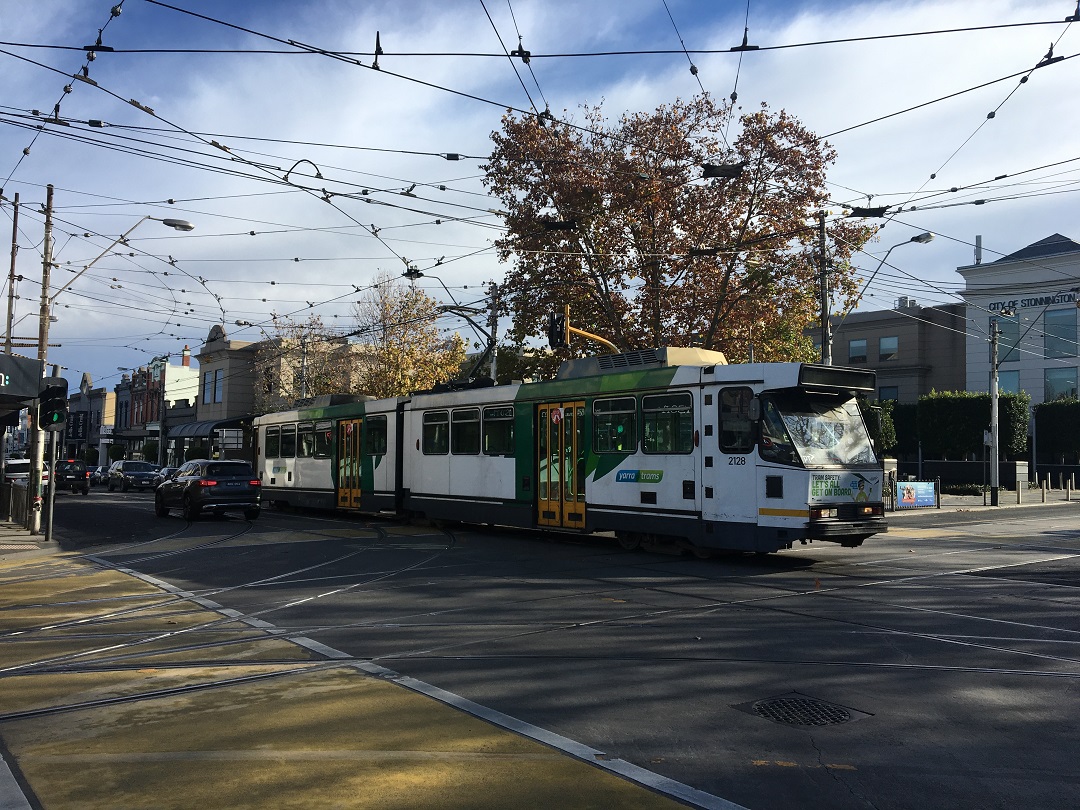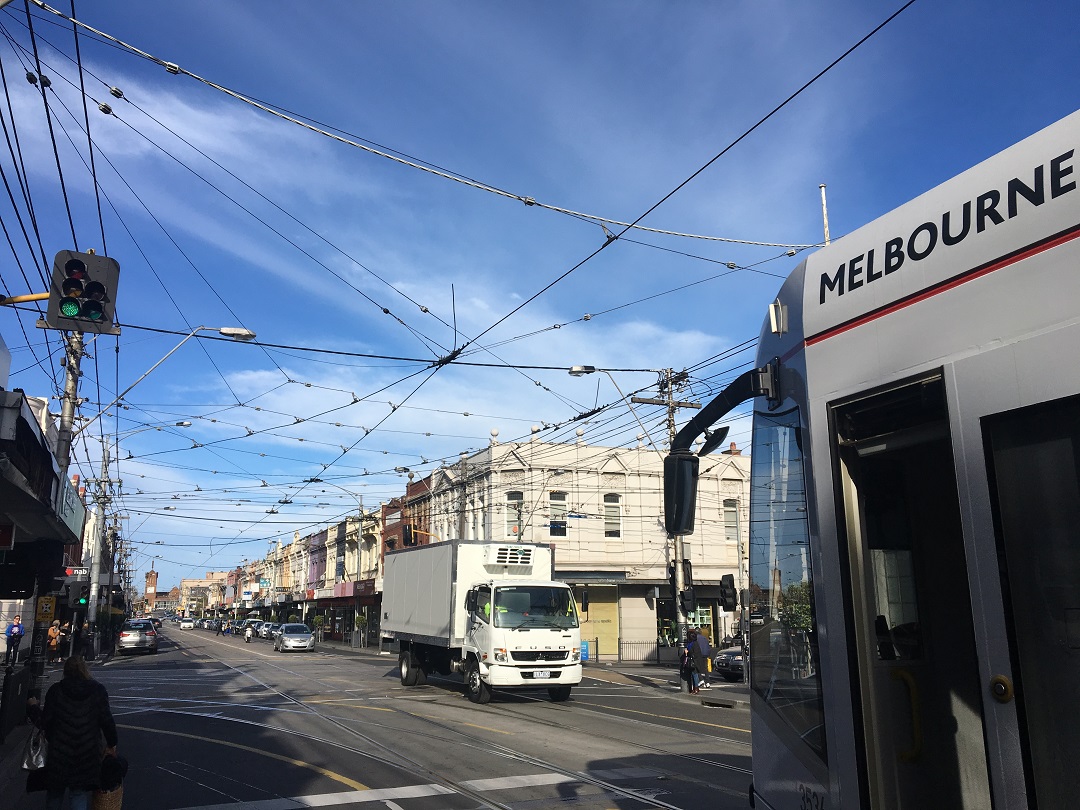
Flies to the urban spiderweb—we’re doing away with overhead tram lines.
Trams are as Melbourne as the MCG and an obsession with coffee. But while Melbourne has the world’s largest tram network (250 km), other Australian cities like Sydney and Newcastle are rekindling their love affair with light rail.
Until recently it’s come at a cost, the thick “spiderweb” of overhead cables needed to keep electrified light rail on the move. They’re ugly, costly to maintain and require their own complex network of infrastructure and sub-stations.
Now though, there’s a new kid on the block that could do away with overhead power lines and move everything safely onboard the tram. Supercapacitors are milk carton size devices that can store large amounts of energy, release it in fast bursts, and then recharge rapidly. It means a tram could arrive at a stop, be charged up with megawatts of power in a minute, then continue on its way. All without the need for overhead power lines.
We’re working on a range of supercapacitor projects with the Australian Government’s Rail Manufacturing Cooperative Research Centre and the China Railway Rolling Stock Corporation (CRRC).
CRRC is renowned for building the world’s first supercapacitor-powered light rail. Now we’re working with them to develop an improved energy management system to make the technology commercially viable. That has involved updating cell balancing, charge and discharge profiles, and communications between the on-board system and the supercapacitors.

Talk about grid-lock—Melbourne’s overhead power lines.
A new prototype, developed in Sydney, has already been sent to China for testing.
Getting rid of overhead power lines would mean the sky’s the limit for light rail. It opens the way for more design flexibility and taller trams that can carry vastly more people. All while greatly reducing construction and maintenance costs. Regenerative braking could also be used to harness the kinetic energy of slowing a tram and turn it into a sustainable power source to get it moving again.
Australia’s rail supply industry employs more than 15,000 people in the manufacturing sector, in businesses ranging from small enterprises through to large multinationals. By cooperating with global partners like CRRC we’re developing new technology that allow the industry to improve its capability and international competitiveness.
And given Australia’s new fondness for light rail, our technology could soon be coming to a street – but not sky – near you!
Did you know:
- Melbourne’s trams travel far enough a year combined to make 32 return trips to the moon.
- Before it closed in 1961, Sydney’s tram network was Australia’s most extensive (291 km) and remains the nation’s largest ever public transport carrier, moving 400 million people a year.
- Broken Hill once had a tram line. It transported passengers and silver ore to and from the South Australian border.
- Newcastle will have Australia’s first “wireless” light rail system. It’s scheduled to be completed in 2019.
Find this energising?
We’ve got plenty of bright sparks working on next generation electronics.


19th June 2018 at 12:14 pm
I must say, I agree that CSIRO needs to be technically precise. I can’t see the point at aiming this news format at the lowest available intellects, as it’s those whose intellect is sufficient to be searching who read it. Please stop with the child-like approach.
Why not, for example, tell us some facts about this supercapacitor? Does it involve graphene or other 2-D options or permutations. Come on, try to be sophisticated.
19th June 2018 at 2:24 pm
Hi Sandy,
The blog references power, not energy. A megawatt is a magnitude of power (not energy). We understand this might be a bit confusing, but the terminology used by our scientists is correct. We hope that clears up any confusion you may have had.
We appreciate your feedback, however we disagree that writing about our amazing science in an interesting and easy to read format is aiming at “the lowest available intellects”. We believe that science should be accessible to everyone; regardless of age, gender, education or location. That is the purpose of our blog, and we hope you continue to enjoy reading about our work.
Cheers,
Ellen
CSIRO Social Media
19th June 2018 at 11:57 am
You seem to be doing a pretty flash job mate – how about you apply to join CSIRO and handle what is clearly a catastrophic PR nightmare, before it goes too far?
Just kidding David. While the technical error may be there, it’s pretty exciting stuff to think Melbourne and other light rail cities will have the opportunity to do away with the spiderweb lines, and that may have been the thrust of the article.
Perhaps a more glaring error is the statement that Sydney is back on track with the light rail. I thought we were just digging holes, diverting traffic and spending billions to meet the state government’s private spending quota.
19th June 2018 at 8:51 am
If the charge station had supercaps,the trams could be charged in seconds.
18th June 2018 at 6:58 pm
When did Broken Hill have a tram line to and from the South Australian border?
19th June 2018 at 11:36 am
Hi Graham,
The Silverton Tramway ran from 1888 to 1970. You can find a photo of it in action here: https://www.records.nsw.gov.au/image/14086_a005_a005SZ846000032r
Cheers,
Ellen
CSIRO Social Media
18th June 2018 at 3:53 pm
“be charged up with megawatts of power in a minute”
Megawatt is not a unit of stored energy, a supercap can’t store them. And I doubt the charging station could deliver megawatts (a measure of the /speed/ of delivery of the energy), only kilowatts. The sentence would have been better written as “kilowatt hours” or “joules”. If CSIRO can’t be technically precise, who can?
19th June 2018 at 1:50 pm
Hey David,
The blog references power, not energy. A megawatt is a magnitude of power (not energy). We hope this clears up any confusion you might have had!
Cheers,
Ellen
CSIRO Social Media